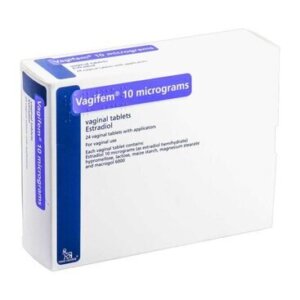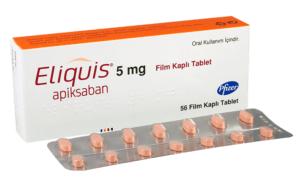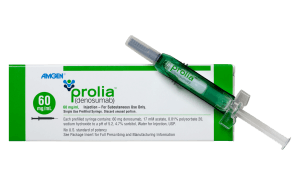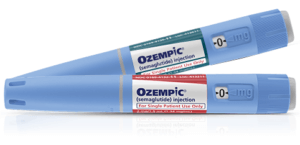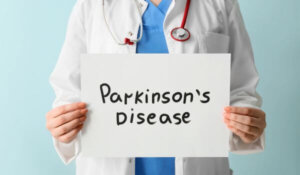 The fact that several well-known individuals have suffered from the devastating effects of Parkinson’s Disease (PD) allowed the condition to become more widely recognized than other chronic illnesses that have the same or even higher incidence. Just a few of the more prominent names that most people recognize are:
The fact that several well-known individuals have suffered from the devastating effects of Parkinson’s Disease (PD) allowed the condition to become more widely recognized than other chronic illnesses that have the same or even higher incidence. Just a few of the more prominent names that most people recognize are:
- Michael J. Fox is a famous actor whose Hollywood career (Alex P. Keaton on the wildly popular TV series Family Ties and lead roles in Teen Wolf and the Back to the Future movie series) made him a household name. While filming Doc Hollywood in 1991, Michael developed a tremor in his pinky, and a consultation with a neurologist revealed that he had early-onset Parkinson’s Disease. He was only 29 years old. Fox has retired from full-time acting to focus on advocacy and fundraising for Parkinson’s Disease, establishing The Michael J. Fox Foundation for Parkinson’s Research.
- Muhammad Ali (born Cassius Clay) was the most famous boxer in the sport’s history because he held the World Heavyweight title and won the Olympic gold medal in 1961. He was diagnosed with Parkinson’s in 1984 at the age of 42, three years after he retired from boxing. His diagnosis brought significant attention to the disease, and he was active in fundraising and awareness efforts.
- Sir Billy Connolly is a world-famous comedian and actor from Scotland who was diagnosed with PD at the age of 70 in 2013.
- Alan Alda is the actor best known for his role in the TV series M*A*S*H; he was diagnosed with Parkinson’s in 2018 at the age of 78.
- Linda Ronstadt is a famous American singer who was diagnosed with Parkinson’s Disease in 2013 but had suffered from advancing symptoms slowly affecting her voice for more than two decades. A re-investigation in 2019 showed that she had been misdiagnosed and had a subtype of PSP (progressive supranuclear palsy). PSP is a neurodegenerative brain condition but has a different cause from PD. PSP-P also causes the tremors that are characteristic of Parkinson’s Disease, which may help explain the original misdiagnosis.
- Brian Grant played in the NBA for 12 seasons in teams like the Sacramento Kings, the Miami Heat, and the LA Lakers. He was diagnosed with early-onset Parkinson’s disease in 2009 at the age of 36.
- Ben Petrick was a Major League Baseball player diagnosed with early-onset PD at the age of 22.
At what age does Parkison’s Disease occur?
One of the first things to notice from this short list is that Parkinson’s Disease can strike at any age. In the general population, the incidence of PD varies significantly with age, with the risk increasing as people get older, but that’s no guarantee that it cannot develop in younger adults.
The following is an overview of the incidence rates based on age groups (showing rates of new cases each year per 100,000 members of the general population):
- Under the age of 50, Parkinson’s Disease is relatively rare. When it does occur, it is termed “early-onset” or “young-onset” Parkinson’s. The incidence generally falls well below ten new cases per year.
- For people in their 50s, the incidence increases to between 20 and 50 new cases per 100,000 per year.
- There’s a sharp increase for people in their 60s, jumping up on average to 100 to 200 new cases per 100,000 per year.
- People in their 70s can see a further sharp increase to 200 to 400 new cases per 100,000 yearly.
- Finally, people 80 years of age and older encounter the highest incidence of Parkinson’s Disease, where the rates can exceed 400 new cases per 100,000 each year.
These estimates are subject to many variabilities attributed to ethnicity, lifestyle, environment, and gender. One of the most critical influences on the level of reporting is the healthcare system’s skill for detecting and diagnosing PD.
A few examples of known factors are
- Men are generally more likely to develop Parkinson’s than women across all age groups.
- A few known genetic mutations can trigger PD. A higher prevalence of the LRRK2 mutation has been observed in Ashkenazi Jewish and North African Berber populations, which may contribute to a higher incidence of PD in these groups.
- Certain pesticides and herbicides such as organochlorine pesticides, rotenone (a pesticide), and paraquat (a herbicide) are among those frequently linked to an increased risk of developing Parkinson’s. Exposure can occur through inhalation, skin contact, contaminated water, or food consumption. Agricultural workers regularly interacting with these chemicals are at a particularly heightened risk. Studies have consistently found an increased incidence of Parkinson’s Disease in rural areas, especially in communities with intensive agricultural activity.
What happens when a person develops Parkinson’s Disease?
People with Parkinson’s Disease are developing a condition characterized by the degeneration of neurons in a part of the brain called the substantia nigra, which is a small part of the basal ganglia that is involved in the control of the body’s movements. It also plays a part in the chemical signaling in the brain. These neurons produce dopamine, a neurotransmitter that plays a crucial role in controlling movement and coordination. As these neurons deteriorate, dopamine levels decrease, leading to the symptoms of movement disorders commonly associated with PD.
What are the main symptoms of Parkinson’s Disease?
Parkinson’s Disease typically starts with subtle symptoms that gradually worsen. While there is no strict sequence for the appearance of symptoms, some patterns are commonly observed:
- Tremors, mainly starting in one hand, are known as a “resting tremor.”
- Slowness of movement (bradykinesia), which manifests as a reduction in spontaneous movement making everyday tasks challenging.
- Persistent stiffness in the limbs and trunk (muscle rigidity).
- Balance problems and increased risk of falls (postural instability).
Non-motor symptoms, such as sleep disturbances, mood changes, and cognitive impairment, can also signal the onset of Parkinson’s and significantly impact the quality of life. Several autonomic functions, such as digestion, bowel activity, sweating, and blood pressure control, may be affected as PD progresses. High blood pressure (hypertension) can also occur, but low blood pressure (hypotension) is more common.
What are the warning signs of Parkinson’s Disease?
Apart from the primary symptoms listed above, some other more subtle signs may present, including changes in handwriting, reduced facial expressions, changes in voice, and difficulty with fine motor skills.
No specific blood tests for specific biomarkers, imaging, or other routine tests can detect PD early on. If a person notices the presence of some of the symptoms above, they may begin to suspect the possibility of PD. In that case, a specialist healthcare provider may try to make a clinical diagnosis primarily based on medical history and a neurological examination. This would typically include an assessment of motor skills, balance, coordination, and reflexes or a DaTscan, a specialized imaging test that looks at the dopamine system in the brain. While it can’t diagnose PD definitively, it can help differentiate it from other conditions. Other imaging tests, such as MRI or CT scans, are not diagnostic for PD but may be used to rule out other conditions.
Making an early diagnosis before the full onset of the symptoms is made more difficult by the fact that early PD symptoms can mimic those of other neurological disorders.
In some cases, doctors may administer a dose of a drug containing l_DOPA, which is known to control the symptoms in patients with PD. A positive response can support a PD diagnosis.
Does Parkinson’s Disease get worse with age?
PD is an incurable, chronic, and progressive disorder, meaning that symptoms generally worsen over time.
For individuals diagnosed at a younger age, the disease may progress more slowly, but they may live with the disease for a more extended period. As a result, they might experience a broader range of complications over time, some of which can be quite complex.
What are the treatment options for PD?
There is currently no cure for Parkinson’s Disease, and the primary treatment plans available (as of this writing) are aimed at reducing symptoms with medication and trying to minimize the dangers and discomforts of the disease.
Medications
Drug treatment for patients with Parkinson’s aims to prolong the action of dopamine in the brain by one of four routes:
- Replacing dopamine that has been metabolized
- Inhibiting breakdown of free dopamine molecules
- Sensitizing dopamine receptors
- Stimulating dopamine release
There are several main paths to achieve this:
- levodopa (also known as L-DOPA) dopamine booster
- monoamine oxidase-B (MAO-B) inhibitor
- catechol-O-Methyltransferase (COMT) inhibitors
- dopamine mimics (dopamine agonists)
- anticholinergics
Physical therapy, Occupational therapy, and Speech therapy
The involvement of a multidisciplinary care team is critical in Parkinson’s Disease management for several reasons:
- Parkinson’s affects many different aspects of health, so a holistic team approach is necessary to ensure that all aspects are addressed.
- Each patient is different, which means treatment must be tailored to each individual.
- Both patients and their families need education, emotional support, and practical advice to cope with the challenges of PD.
- A care team can ensure that all patient care aspects are harmonized, preventing treatment fragmentation and overlap.
Such teams are often found in specialized Parkinson’s Disease centers or neurological clinics. They work collaboratively, with regular communication and meetings, to discuss patient care, ensuring that the management plan is cohesive and adaptive to the patient’s changing needs.
Some of the specialized therapies required by Parkinson’s patients are:
- Physical therapy focuses on improving mobility, balance, and strength.
- Occupational therapy to help patients maintain their daily living skills.
- Speech therapy that addresses issues with speech and swallowing.
Surgical treatments
Deep Brain Stimulation (DBS) involves surgically implanting electrodes in specific brain areas to regulate abnormal impulses. These electrodes are connected to a pulse generator implanted in the chest, which sends electrical impulses to the brain.
It is beneficial for patients who have severe tremors or who experience significant variations in their response to medication. The electrical impulses can reduce symptoms like tremors, rigidity, and bradykinesia. A healthcare professional can externally adjust the device’s settings to optimize symptom control.
DBS is generally only considered when medication alone cannot adequately control symptoms. It does not stop the progression of the disease but can significantly improve the quality of life.
Focused Ultrasound Thalamotomy is a new non-invasive technique that uses focused ultrasound to target the brain areas involved in tremors.
How are drugs based on levodopa used in the treatment of PD?
Levodopa (L-DOPA) is the chemical l-3,4-dihydroxyphenylalanine. It is a precursor to the neurotransmitter dopamine, and is prescribed to increase its levels in the central nervous system. However, upon ingestion most levodopa is decarboxylated to dopamine before it reaches the brain. Dopamine is unable to cross the blood-brain barrier into neurons where it is needed, so there is little therapeutic gain from L_DOPA on its own, and overcoming this with increased doses can produce peripheral side effects such as vasoconstriction, nausea, and arrhythmia.
Carbidopa inhibits the aforementioned decarboxylation, but does not itself cross the blood-brain barrier. This allows dopamine to build up solely in the brain. The adverse effects caused by peripheral dopamine are minimized. However, benserazide cannot reduce the centrally mediated side effects of levodopa, particularly dyskinesia.
Most commonly, clinicians use drugs containing levodopa along with carbidopa to boost the production of dopamine in the brain for the treatment of Parkinson’s Disease in patients with specific symptoms. The therapeutic efficacy of levodopa is different for different kinds of symptoms. Bradykinesia and muscle rigidity are the most responsive to L-DOPA, while tremors are less responsive to levodopa therapy. Speech, swallowing disorders, and postural instability are the least responsive symptoms.
Which levodopa drugs are most frequently prescribed?
The drugs that provide levodopa combine other chemicals that improve the effectiveness of the main component in building dopamine molecules.
- Stalevo is an oral medication that combines levodopa, carbidopa, and entacapone in one tablet. Carbidopa helps prevent levodopa from breaking down in the gut, liver, and other tissues. This allows more levodopa to reach the brain and helps prevent nausea and vomiting. Entacapone enhances the action of levodopa by reducing the end-of-dose “wearing off” of the levodopa dose. Entacapone is a COMT inhibitor that slows down the consumption of levodopa, resulting in an increase in its bioavailability and lengthening the duration of action of each dose.
- Sinemet CR (controlled release) is a sustained-release combination of levodopa and carbidopa. Carbidopa helps prevent L_DOPA from breaking down in the liver, gut, and other tissues. Hence, it boosts the volume of levodopa reaching the brain and helps prevent side effects such as nausea and vomiting.
How are drugs based on dopamine agonists used in the treatment of PD?
Dopamine agonists affect neurons (nerve cells) in the brain that have dopamine receptors. The effect of dopamine agonists is to activate the receptors rather than to increase dopamine levels. They are sometimes called dopamine mimics because they mimic the effect of dopamine without converting levodopa into dopamine. In general, dopamine agonists are not as effective as levodopa combined with carbidopa.
Dopamine agonists are most frequently prescribed to treat the motor symptoms of Parkinson’s Disease that are affecting control movement.
Which dopamine agonists are most frequently prescribed for the treatment of Parkinson’s?
- Neupro (rotigotine) is a transdermal patch used to treat Parkinson’s disease. It is prescribed when oral medication is not suitable.
- Amandin (amantadine) is prescribed in the early stages of the disease to help improve slow movements and rigidity. It may also be used as a dual therapy with other medications like Sinemet in late Parkinson’s.
- Requip (ropinirole) can be prescribed for monotherapy in the early stages of PD or in conjunction with levodopa.
- Mirapex (pramipexole) mimics the activity of dopamine. It is prescribed as monotherapy for milder cases of PD or in conjunction with levodopa to treat advanced Parkinson’s Disease. It is also used to treat restless leg syndrome (RLS).
How are drugs based on MAO-B inhibitors used in the treatment of PD?
MAO-B inhibitors do not themselves increase dopamine levels in neurons in the brain but rather help have an effect on levodopa in nerve cells to make better use of their dopamine. Monoamine oxidase type B enzyme consumes free dopamine molecules before they have had a chance to be used. MAO-B inhibitors stop this enzyme so that dopamine remains available to prevent symptoms of PD.
Which MAO-B drugs are most frequently prescribed?
- Azilect (rasagiline) is often prescribed in the early stages of PD and can be beneficial in delaying the need for levodopa itself. It may be used as a monotherapy in early PD or alongside l_DOPA in more advanced stages.
How are drugs based on COMT used in the treatment of Parkinson’s?
Catechol-O-methyltransferase (COMT) is an enzyme that breaks down dopamine. COMT inhibitors work to inhibit the enzyme and so increase the supply of dopamine. They are prescribed together with drugs supplying levodopa to enhance their effectiveness.
Which COMT drugs are most frequently prescribed for the treatment of Parkinson’s Disease?
Comtan (entacapone) is prescribed to be used in combination with l_DOPA. It’s not effective on its own against Parkinson’s Disease. Entacapone prolongs the life of levodopa by blocking COMT enzymes, which break down the molecule before it reaches the brain.
How are drugs based on anticholinergics used in the treatment of Parkinson’s Disease?
In Parkinson’s Disease, a dopamine deficiency causes acetylcholine overactivity, a competing neurotransmitter involved in signaling between the brain and muscles. This causes some of the symptoms of the disease. Reducing the level of acetylcholine helps restore the balance of acetylcholine and dopamine in the brain.
Anticholinergics reduce the activity of the acetylcholine by blocking the receptors that acetylcholine acts on. A deficiency of dopamine in patients with PD causes overactivity of acetylcholine. Procyclidine restores the balance between acetylcholine and dopamine in the brain. In this way, procyclidine helps control some of the symptoms of Parkinson’s Disease. It is most effective at reducing the tremor and rigidity associated with the disease but has little effect on slow movements (bradykinesia).
Which anticholinergic drugs are most frequently prescribed for PD?





